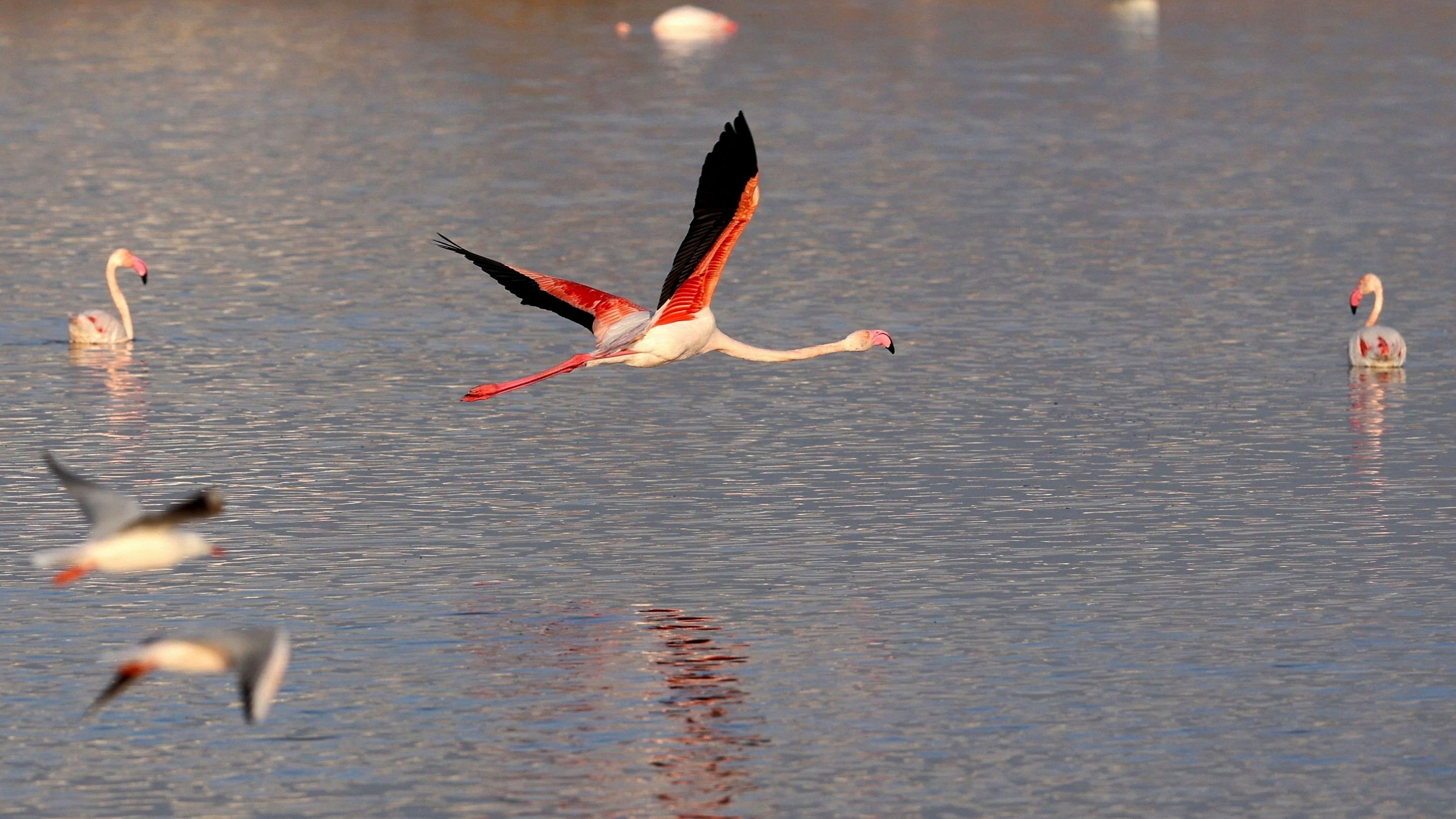
More than one lakh Lesser Flamingos (Phoenicopterus minor) and Greater Flamingos (Phoenicopterus roseus) migrate to Mumbai during winters.
Credit: Reuters
Navi Mumbai, DHNS: The first batch of Lesser Flamingos have arrived in the satellite township of Navi Mumbai.
Flamingos are the winter visitors of the financial capital of Mumbai and the larger Mumbai metropolitan region.
More than one lakh Lesser Flamingos (Phoenicopterus minor) and Greater Flamingos (Phoenicopterus roseus) migrate to Mumbai during winters.
The Greater Flamingo is around five feet tall and whitish-pink in colour while the Lesser Flamingo is around three feet tall and rose-pinkish in colour.
During a bird walk conducted by the Bombay Natural History Society (BNHS) at the wetlands near TS Chanakya Maritime Institute near Navi Mumbai, a bunch of flamingos were recorded.
“This bird walk was a fantastic opportunity for our members to connect with nature and witness the diversity of these wetlands. It was also nice that the attendees saw the tagged birds and learnt the significance of the work done by BNHS,” said Kishor Rithe, Director, BNHS.
The trail was led by Dr Raju Kasambe, Assistant Director, Conservation, BNHS and Asif Khan, Programme Department, BNHS and assisted by Naman Kaji, Jayesh V and Vedant Khokrale.
Participants of the walk were treated to one first sighting of Lesser Flamingos for the season in the city.
BNHS Members recorded a total of 60 species, which included sightings of both Lesser and Greater Flamingos, Pied Cuckoo, Common Hoopoe, Osprey, gulls, terns, sandpipers and plovers. The participants were also thrilled to spot birds which were tagged by BNHS. These tagged birds and their resighting play an important role in the study of bird migration.
The trail served as an educational platform, where attendees were enlightened about the significance of bird conservation and the crucial role these wetlands in the city and their winged visitors play in maintaining ecological balance.
The Flamingos start arriving in October, nesting in mud-flats and leaving before the onset of monsoon.
Most of these birds, which are found here, arrive from the Great Rann of Kutch in neighbouring Gujarat. Some palaeontologists and ornithologists believe that they are the birds, which is a link between the family of birds comprising storks, herons, ibises, spoonbills and cranes and the group that comprises ducks, swans and geese.
While Greater Flamingos are one of the tallest birds found in India (average height of nearly four feet), the Lesser Flamingos compensate for their shorter stature with their colour's richness.
While the bigger ones have light pink legs and a few streaks of pink on their feathers, the smaller ones have deep pink feathers and almost red legs and a black bill. In the twilight, they look like flames and hence the name has been derived.
Besides Great Rann of Kutch, they are also found in Point Calimere in Thanjavur district of Tamil Nadu, Chilka in Orissa and Sambhar in Rajasthan. In Maharashtra a few are also seen in Solapur and Aurangabad.
But what has attracted them to Mumbai - they like saline and alkaline water. Soda lakes, salt lagoons and mud-flats form the habitat of flamingos for their food which chiefly comprises crustaceans, worms and blue-green algae, which are abundant in alkaline waters.